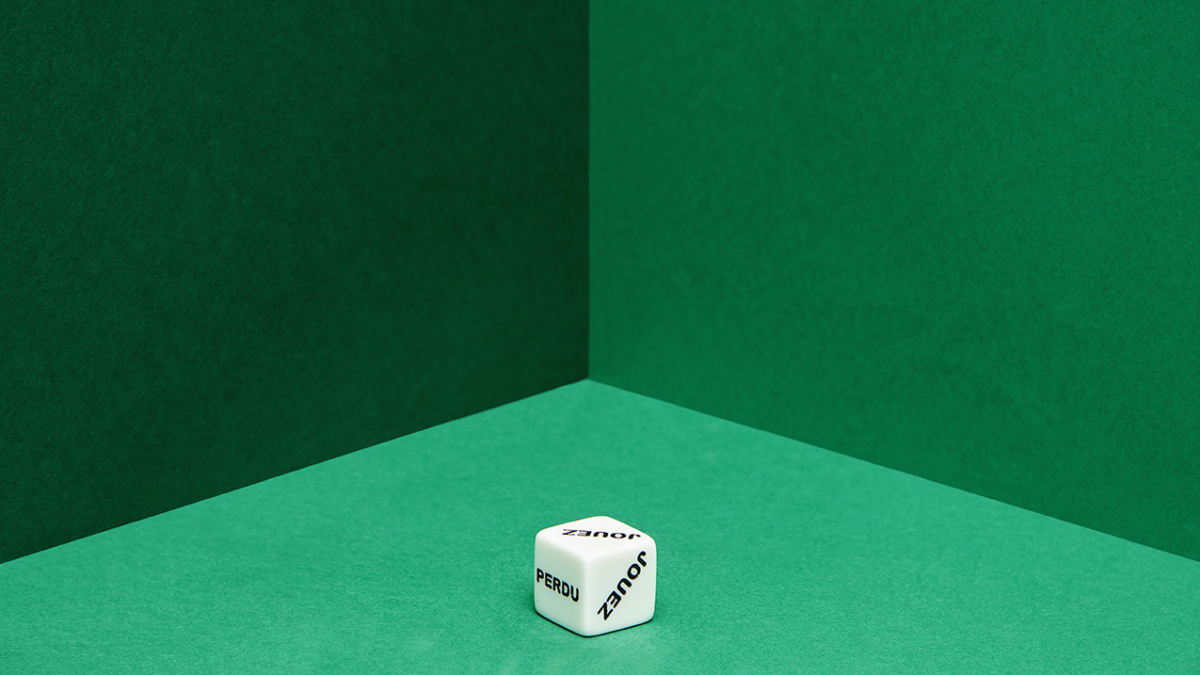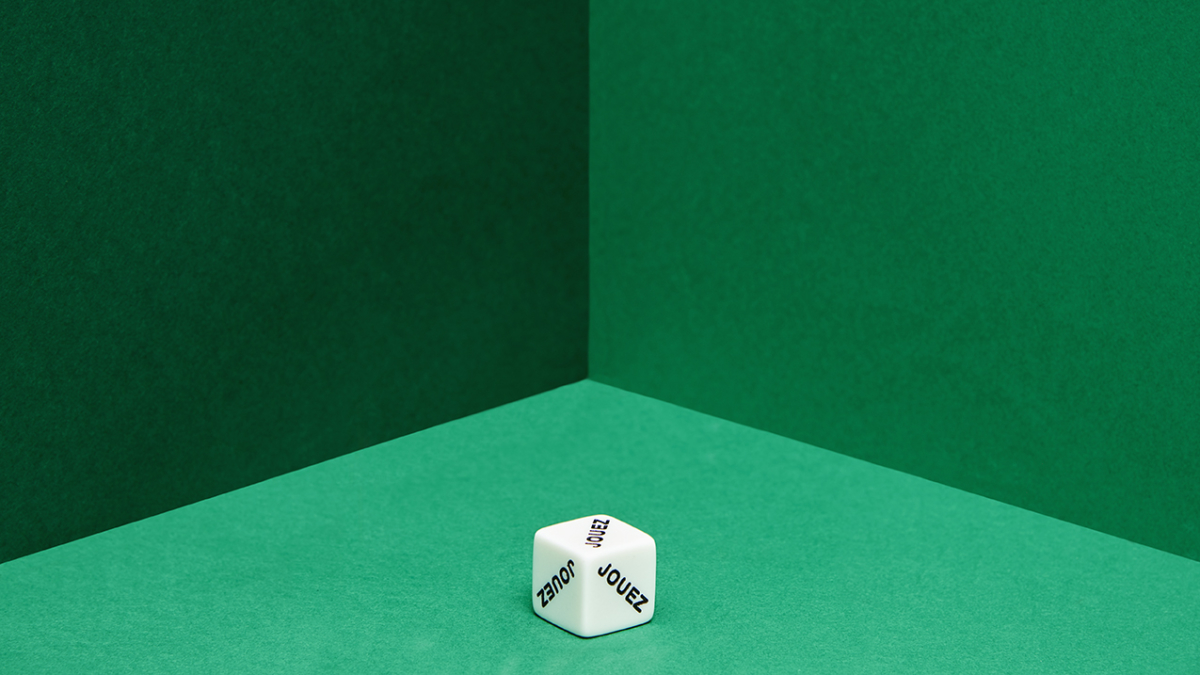Description
Claude CLOSKY started exploring the minimal process of thought and perception 25 years ago, using drawing, creating and appropriating images, objects, sentences, words, actions and creating videos. Developing paradoxes, playing dumb or both at the same time, he is often able to show the instability of ordinary thought process which we don’t usually deem problematic. He has created a dice with only two options : Jouez/Play or Perdu/Lost. Playing is always in present tense (it says « play » not « played »), but « lost » is in the past tense. In other words : you only know you’ve lost once it’s over. Trying your luck means to hope to get another chance to play. The number of sides is not equal : the probability that you’ll keep on playing is five times higher than the chances you have to loose. The work is ambivalent : pessimistic (there’s no way to win) and at the same time optimistic (it’s actually pretty hard to lose).
As losing thus becomes rare, a series of Perdu/Lost will easily appear as a lack of luck rather than mere happenstance showing us how we are caught in the web of our irrational beliefs.











